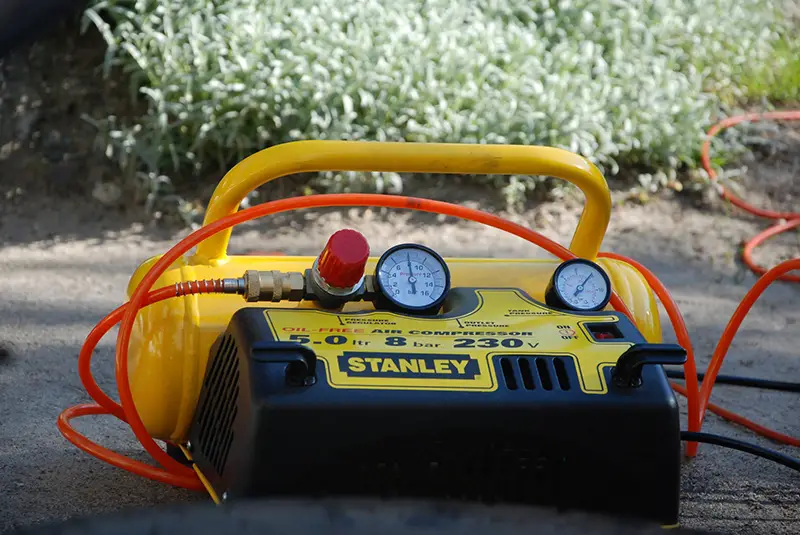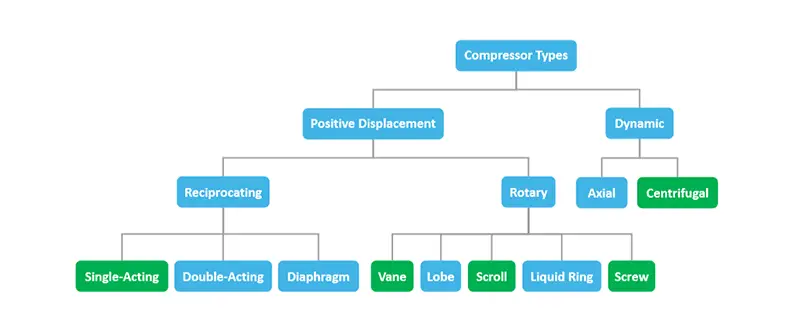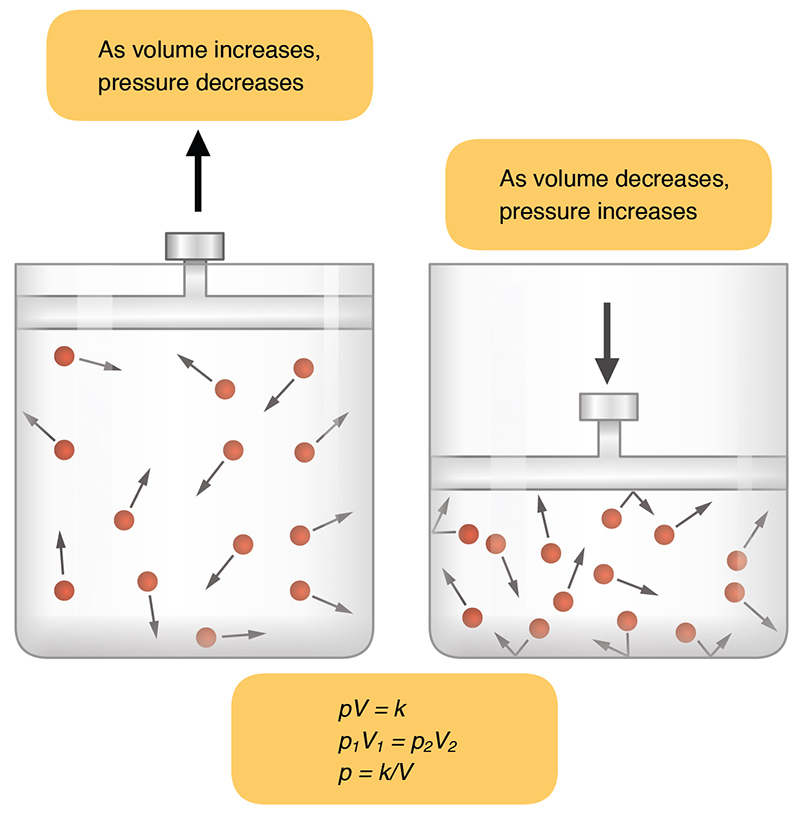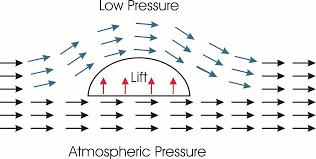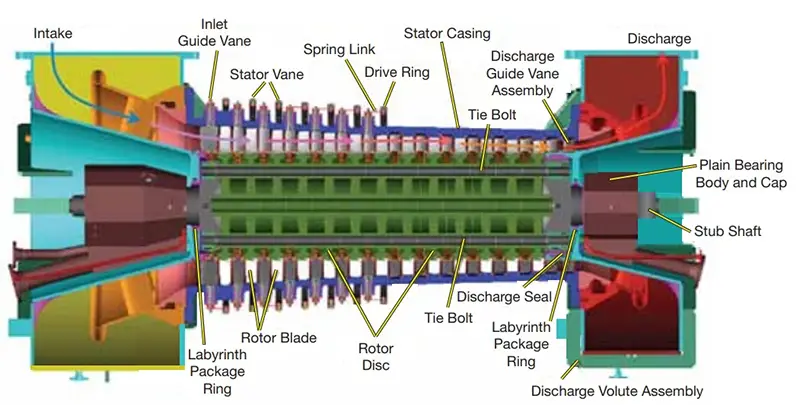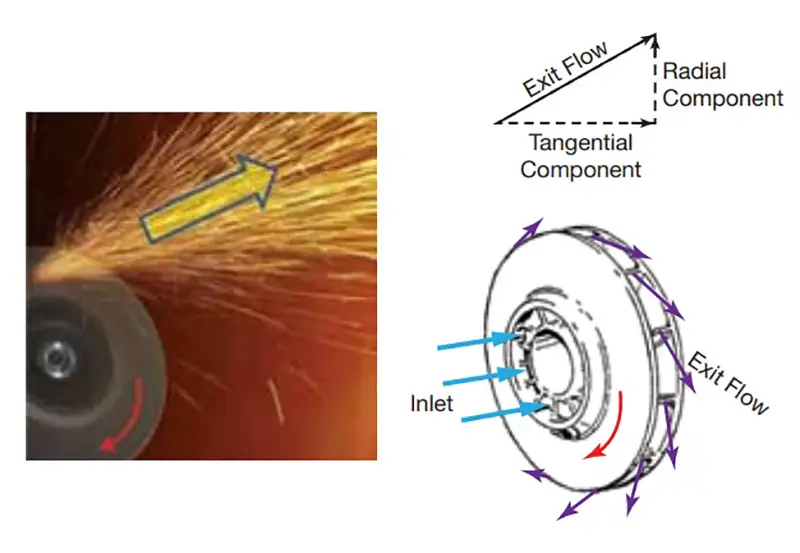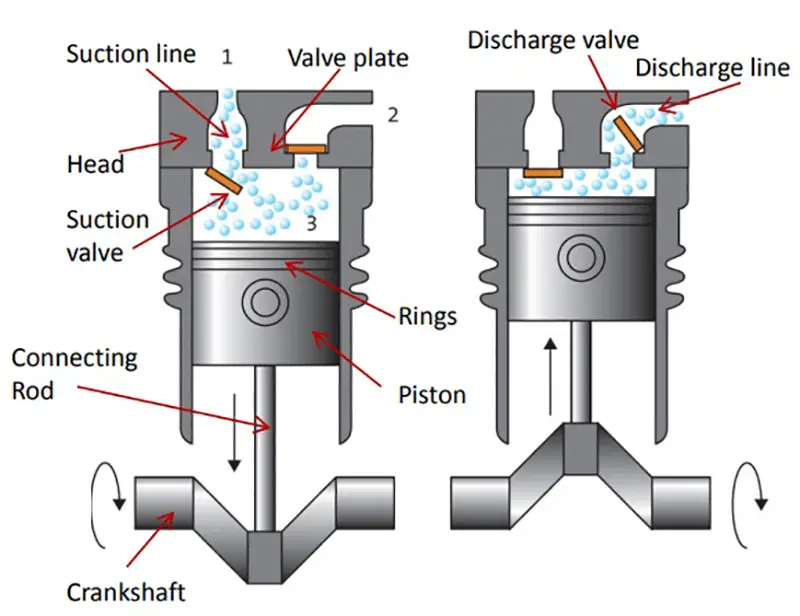Click here to get this post in PDF
In this article you’ll learn about the different types of industrial air compressors that are used today. Air compression technologies have existed since 3000-1500 BC when the practice of metallurgy began. Air compressors have evolved from being manually operated to being electrically powered and now they even include smart technologies.
The chart below is a summary of the types of air compressors that exist in the market.
They are separated to the left and to the right by the type of compression technique used to compress the air. The two compression techniques are Positive Displacement compression and Dynamic compression.
Positive Displacement vs Dynamic Compression
The purpose of air compression in industry is to create pneumatic energy. Pneumatic energy is the power in pressurized fluids (like liquids and gases) that can be used to do meaningful work, like powering tools and driving industrial processes.
Positive Displacement compressors use Boyle’s Law. Boyle’s Law is a property of fluids where the pressure exerted by a fluid within a closed chamber increases as the size of the chamber decreases – the pressure and volume of a fluid are inversely proportional to each other. The only caveat is that the temperature of the fluid needs to remain constant. We can observe Boyle’s Law in effect when we use our lungs to inhale and exhale. Positive Displacement compressors use Boyle’s Law to create high pressure air by pushing air through to a chamber with a decreasing volume.
Dynamic compressors use Bernoulli’s principle. It’s a phenomenon in fluid dynamics where a slow-moving fluid exerts more pressure than a fast-moving fluid – the pressure and speed of a fluid have an inversely proportional relationship. We see Bernoulli’s principle in effect when planes take off. Dynamic compressors use Bernoulli’s principle by manipulating the speed of air through a chamber to create high pressure air.
And so, from these two techniques of compression we get 4 main compressor types.
- Rotary compressors (positive displacement)
- Reciprocating compressors (positive displacement)
- Axial compressors (dynamic)
- Centrifugal or Radial Flow compressors (dynamic)
An Overview of the 4 Main Types of Compressor
An axial flow compression system looks and functions almost exactly like the turbine of a jet engine. Here’s a cross-section of the axial compressor system where air flows from the intake valve on the left towards the discharge valve on the right. There are a series of rotating blades arranged axially along the chamber. These blades rotate at high speeds and increase the speed of the air flow. Also along the chamber are static vanes that act as partial obstructions to the air flow. The interplay between the rotating blades and the static vanes results in a speed difference that raises the pressure of the air stream by the time it reaches the point discharge.
Axial compressors manage large volumes at compressed air at high speeds. Their design is expensive, but small and energy efficient. Multiple axial compressors can be combined to compress the air in stages and receive higher pressure ratios.
Centrifugal compressors use a disc as the rotating element and air flows into the disc from an inlet that’s set at a 90-degree angle perpendicular to it. Within the disc is the chamber for the air to be compressed. The disc chamber is divided like a pie by blades. As air enters the chamber it is re-directed radially outward by the inertia of the rotating disc. The fast-moving low-pressure air is pushed to the edge of the disc where it finds its way through a diffuser and into the discharge chamber. At the discharge end we get slower-moving high pressure air.
Centrifugal compressors lower flow rates than axial compressors but generate higher discharge pressures. Their design is relatively less expensive, and they aren’t used in multi-stage installations.
Reciprocating compressors work exactly like piston pumps or bicycle pumps, except that the pumping action is automatic. The piston element advances and retreats within a chamber, as air is drawn into the chamber and then compressed. The piston element exploits Boyle’s Law to increase and decrease the size of the chamber so that the air inside it gets pressurized.
Reciprocating compressors are the most economical and inexpensive type of air compressor on the market. They are also easy to maintain and relatively cheap.
Rotary compressors use elements like rotary screws, vanes or lobes within a chamber to manipulate the chamber size. The rotating elements are designed to move in ways that increase and decrease the volume of the chamber inside the compressor. Air is drawn in from the inlet valve and proceeds to be subjected to a decreasing chamber as it moves between the gaps formed by the rotating elements. This exploits Boyle’s law to produce pressurized air.
Rotary compressors produce high flow rates when compared to reciprocating compressors. They are more expensive but have relatively smaller exterior dimensions.
Consider This Before Purchasing An Air Compressor
There are numerous distributors for air compressors in the UAE. A quick google search of your preferred compressor type will yield you plenty of results to choose from. However, we recommend working directly with an air compressor manufacturer who has a regional office in the UAE. Air compressor manufacturers like Atlas Copco offer free energy audits, consultation, service plans and more. Working directly with a manufacturer ensures you get the most bang for your buck when you decide to invest in an air compressor.
Work with the engineers of your team or a consultant from an air compressor manufacturer to find out your exact requirements. You must identify the maximum pressure you will need to operate all of your tools, machines and processes. You will need to identify the rate of flow of compressed air you will need running through your installation, and then include a 30% safety margin. And you must also factor in things like space constraints, duty-cycles and futureproofing.
Finally, invest in a good maintenance plan. Prepare an air compressor inspection checklist or get one made for you by the manufacturer. Keep a strict schedule and use any smart monitoring technologies that might come built-in with your compressor. We’d also advise relying only on the manufacturer’s air compressor repair service or service contracts for the best possible outcomes.
Conclusion
There are 4 main types of air compressors – Axial, Centrifugal, Rotary and Reciprocating compressors. And they differ in the type of compression techniques they use and their internal design. Some are more expensive than others, some are more compact than others, and each has different outputs. To identify which compressor is best for you consult with a qualified engineer or get in touch with your closest regional air compressor manufacturer. Your facility or site requires a proper inspection if you want to purchase the most energy efficient, and cost efficient, air compressor for the job.
You may also like: Five Aspects You Should Learn Before Buying an Air Compressor
